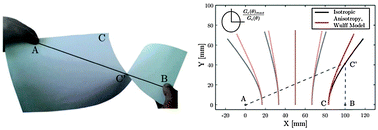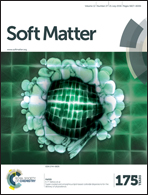The tearing path in a thin anisotropic sheet from two pulling points: Wulff's view
Abstract
We study the crack propagation in a thin notched sheet of a polymeric material when two points in the sheet are pulled away. For materials of isotropic fracture energy, we show that an effective tearing vector predicting the direction of fracture propagation can be defined. In the flat sheet state, this vector is the perpendicular bisector of the vectors joining the pulling points and the fracture tip. The tearing vector is then differently oriented than the pulling direction. The “maximum energy released rate” criterion predicts a crack path that is tangential to the instantaneous tearing vector, or equivalently trajectories that are hyperbolas whose focal points are the pulling points. However, experiments indicate that fracture paths rarely follow this prediction because any small anisotropy existing in real thin sheets deviates the crack path from being parallel to the tearing vector. Although these deviations are locally small, as crack progresses a cumulative effect which results in large errors for long crack paths are observed. We therefore introduce the anisotropy effect through the generalization of the “maximum energy released rate” criterion and demonstrate that the crack trajectory and the minimum force to sustain tearing can be found through a Wulff's type geometrical construction. Systematic experiments show that the tearing force and fracture path are in good agreement with this prediction.


 Please wait while we load your content...
Please wait while we load your content...